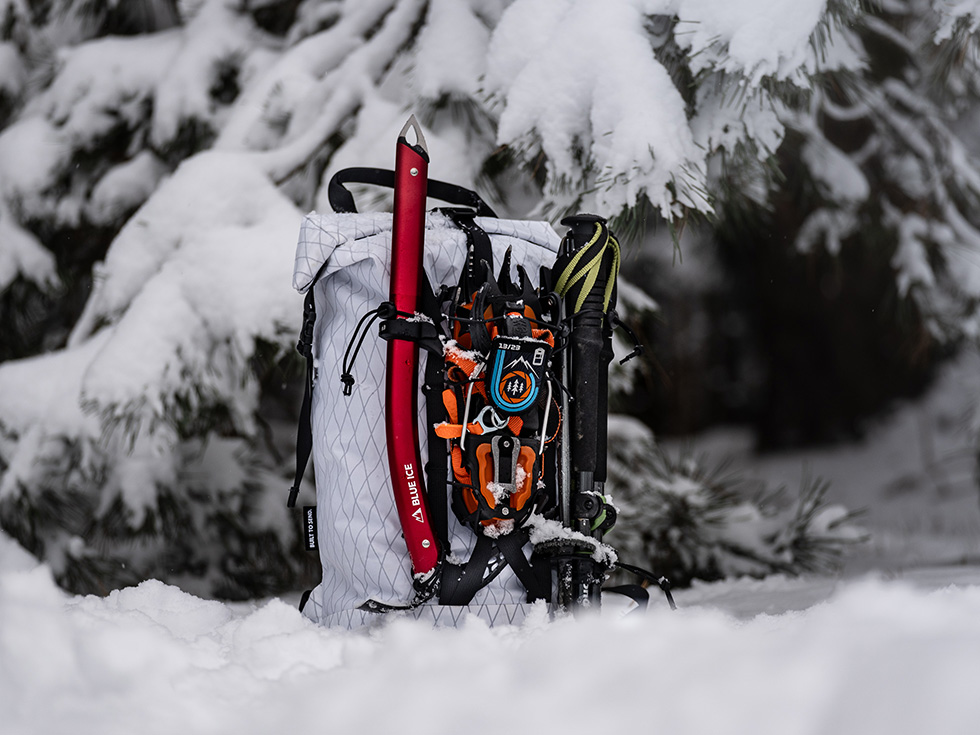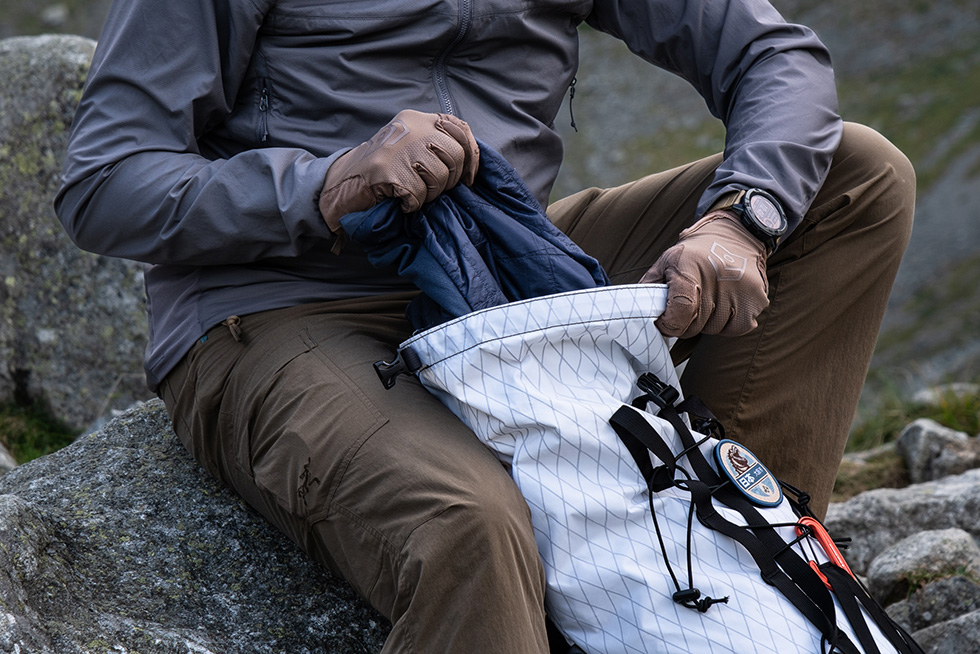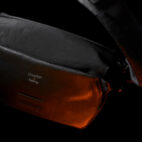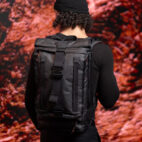
Backpacks

Many mountaineers say, “Lighter and simpler is better”. After 38 years of mountaineering experience, I agree. Still, I’d add this: “Only as long as it works reliably, even in the worst conditions.” The tested BUILT TO SEND U1 undoubtedly belongs to the latter product group. It’s one of the most interesting fast and light daypacks these days. I tried it last autumn and at the beginning of winter in the High Tatras and carried it additionally on multiple local hikes (to try it under snowy conditions, too). So, let me guide you through its features.
Who It Suits
It’s perhaps the easiest “who it suits” ever: mountaineers looking for a fast and light but still sturdy daypack. It should also work well as a general skiing daypack.
Who It Doesn’t
Everyone else, literally. Don’t even consider it if looking for commuting, as a walking pack, EDC, bushcrafting pack, or anything in between. The U1 is a pack for mountain use, end of story.

Specifications
Name: U1
Brand: BUILT TO SEND
Format: Mountaineering daypack
Capacity: 19L (22L overloaded)
Weight: 0.620 kg (1.36 lb)
Materials: VX21 X-Pac, Duraflex hardware, V92 thread
Price: 159 GBP (~199 USD)
The Good
There are a lot of ‘goods’ here. First, the overall impression of the U1 during the unboxing is just great. It has the look and feel of a pro-grade daypack with an alpine pedigree and ultra-modern appearance. And even if I know that first impressions can be misleading, I enjoy the vibes of a good purchase at the starting point – and that’s what you feel when you grab the U1 for the first time.

The U1 is constructed of VX21 X-Pac fabric (US-made), so it’s lightweight, rigid, and waterproof. With Duraflex hardware and high-quality webbing, the U1 is a hardy mountain fighter. Even the construction and material cut are optimized for integrity and protection against the elements – the number of stitching lines is reduced as it’s made of one big folded piece of fabric. They call it Mono-Shell construction, and it’s as seamless as possible without impacting functionality. Robust stitching (with V92 ultra-strong thread) and webbing-taped seams in vital areas make the U1 a rugged specimen. And it’s highly weatherproof – even without fully sealed seams. The bottom section is double-layered for additional durability. Overall manufacturing quality is 10/10, with no complaints. Even if I’d like to start some nitpicking, it is… impossible. Also, for the record, the U1 is designed by mountaineers in the UK, but the production takes place in Asia to keep the price down.

The harness system is relatively simple on the U1. The shoulder straps (VX21 fabric) are well padded with 10mm thick and surprisingly dense foam – they say it’s proprietary foam, but whatever it is – it works. The sternum strap and wide webbing hip belt (removable) nicely hug around the body, so the pack sits securely for any mountain action, including skiing sports. The back panel is also made of VX21 (one big piece, as I said) and padded with foam, so don’t expect superior breathability in hot climate conditions. But that is a classic climbing-style back panel, mainly designed for high and cold mountains, so it works best for what it is intended for. VX21 is durable and doesn’t absorb water (or snow), which are the characteristics I demand in a mountain pack dedicated to operating above the tree line. I recently also tried the pack in cold, snowy conditions, and I admit it’s perfect for winter. The last feature, distinctly visible on the back side, is a generously sized grab handle. All in all, it’s a comfortable pack, especially when worn on more layers than just a t-shirt, which is usually the case in high mountains.

The ice tools attachment system may look simple, but you can easily strap to the U1 all the gear used for winter mountaineering: crampons, trekking poles, and ice axe together at once. Moreover, the clever angled webbing straps keep the ice axe’s pointy blade flat on the pack, so the sharp tip doesn’t flap around. Loosely flopping ice-tool blades is a common annoyance on packs designed by “design teams” without consulting mountaineers. And it can be very dangerous for people around you, too. Also, attaching gear or small pouches to shoulder straps and webbing daisy chains on the main panel is quick and easy.

The pack looks like just one big compartment on the outside – but inside, it hides more organization than you may think. A full-size flat back pocket is great for a map, flat electronics, or a folded rain jacket. Also, there’s a small internal zipper pocket dedicated to a wallet and car keys. It’s not a hydration-compatible pack, but again it’s not a pack for trail running, it’s a small and rugged mountaineering tool.

To close the pack, roll down the reinforced collar, close the Duraflex buckles on the sides, secure on top with a small retention strap, and cinch it down. That procedure makes the pack virtually weatherproof. And yes, you can extend the top part of the pack for overloading – it adds a couple of liters to the volume (enough to store a climbing helmet), but it can compromise the waterproofness of the pack.

It can be easily folded flat for storage, or to attach it to the big basecamp pack. Here you can see the U1 strapped to my Exo Mountain Gear K3 external frame pack. I used a pair of fantastic Austere Manufacturing straps with machined buckles, which are now an essential part of my outdoor kit.

The Not So Good
The U1 is a dedicated small mountaineering backpack, so I don’t consider the simple build and lack of external side pockets a negative – it is a conscious design decision. There is no place for side pockets in a genuine climbing pack. First, a bottle sticking out is a possible snag point when climbing a rock chimney. But most importantly, a 16 oz. Nalgene full of water, flying down a couple of hundred feet, is not a bottle anymore – it’s a deadly missile with enough kinetic energy to ruin someone’s day big time. What I was missing sometimes were the side straps – together with the top strap, it’d allow me to attach a climbing rope on the U1, which is impossible otherwise.
The price (£159, so roughly $199) is not low for just a 19L pack, but considering the top-tier materials and quality of construction, serious mountaineers can justify such a price tag. Also, it’s a very specialized mountain tool, so you should consider that the U1 is excellent only at what it was developed for (climbing and technical mountaineering) – but it lacks the versatility that mainstream hiking daypacks usually offer.
And finally, the U1 is available only in two “color” variants: black and white, and nothing in between. The white version will get dirty (especially the bottom part) after two to three outings, no matter how hard you try to protect it. The black one can get hot in the summer. If either is a negative for you – only you can judge. But I’d love to see an orange or red version for better visibility – it could work as a rescue beacon for the SAR team in a critical situation.

Verdict
The U1 is like a racing car in the backpack industry – it is made for one reason: to help you reach the peak on a summit day. It’s fast, light, simple, and purpose-built. It’s not a versatile tool, it’s not a jack of all trades – but it IS a true master of ONE. So if you’re looking for your ultimate bolt pack or a daypack for mountaineering above the tree line, the U1 should be high on your shortlist. Overall, it’s a serious tool for modern mountaineers for any season and weather – no less, no more. And it has that professional look, too.





 Carry Awards
Carry Awards Insights
Insights Liking
Liking Projects
Projects Interviews
Interviews









